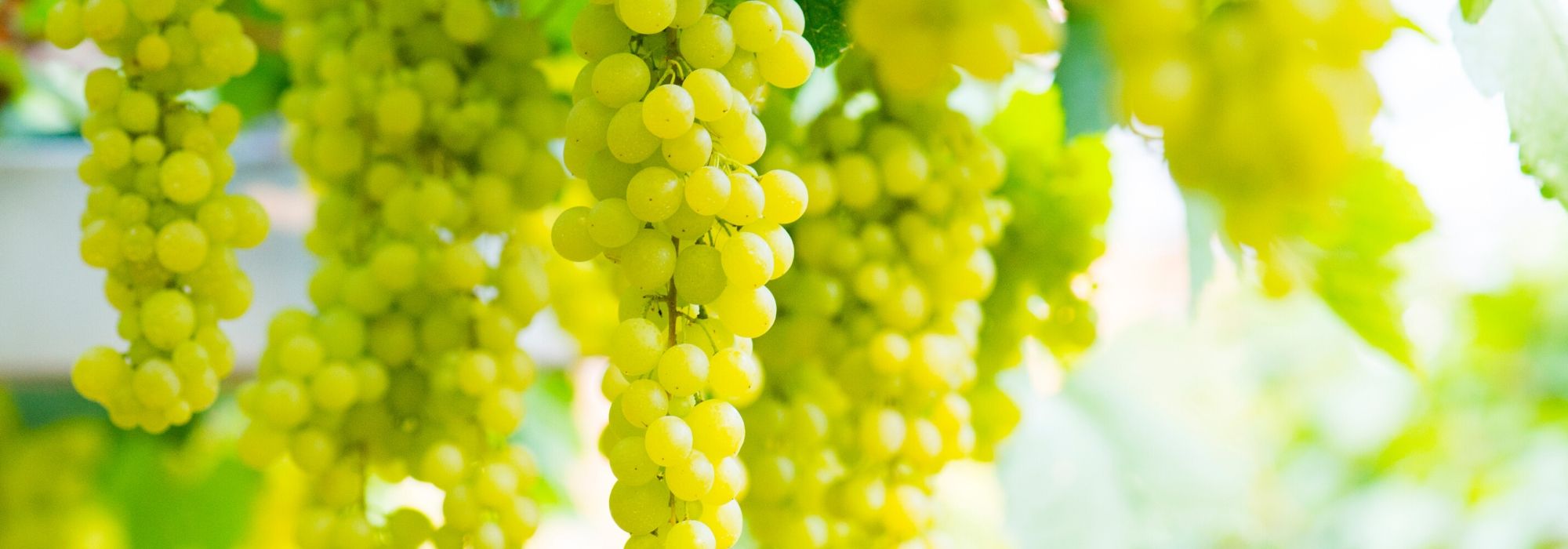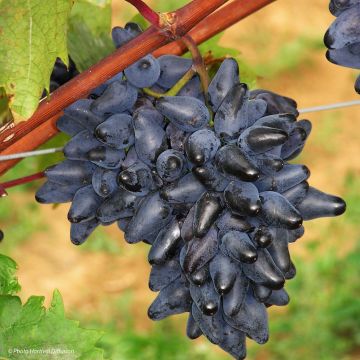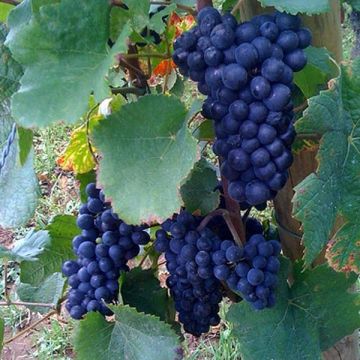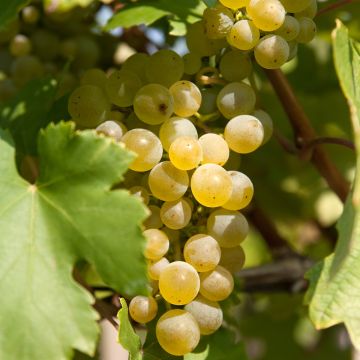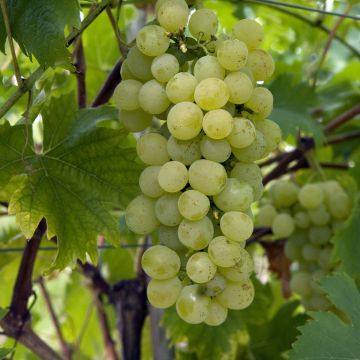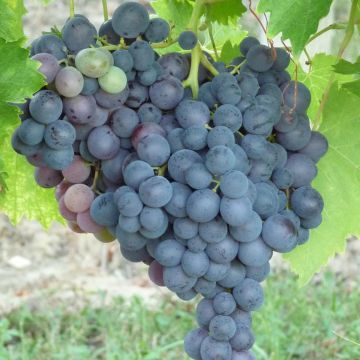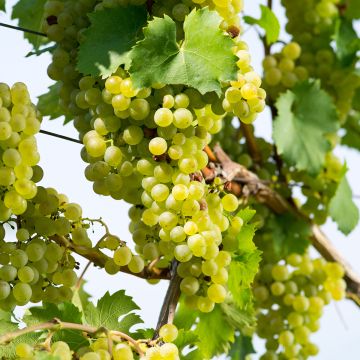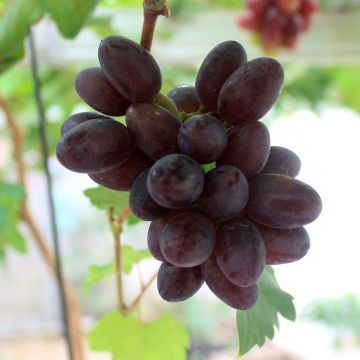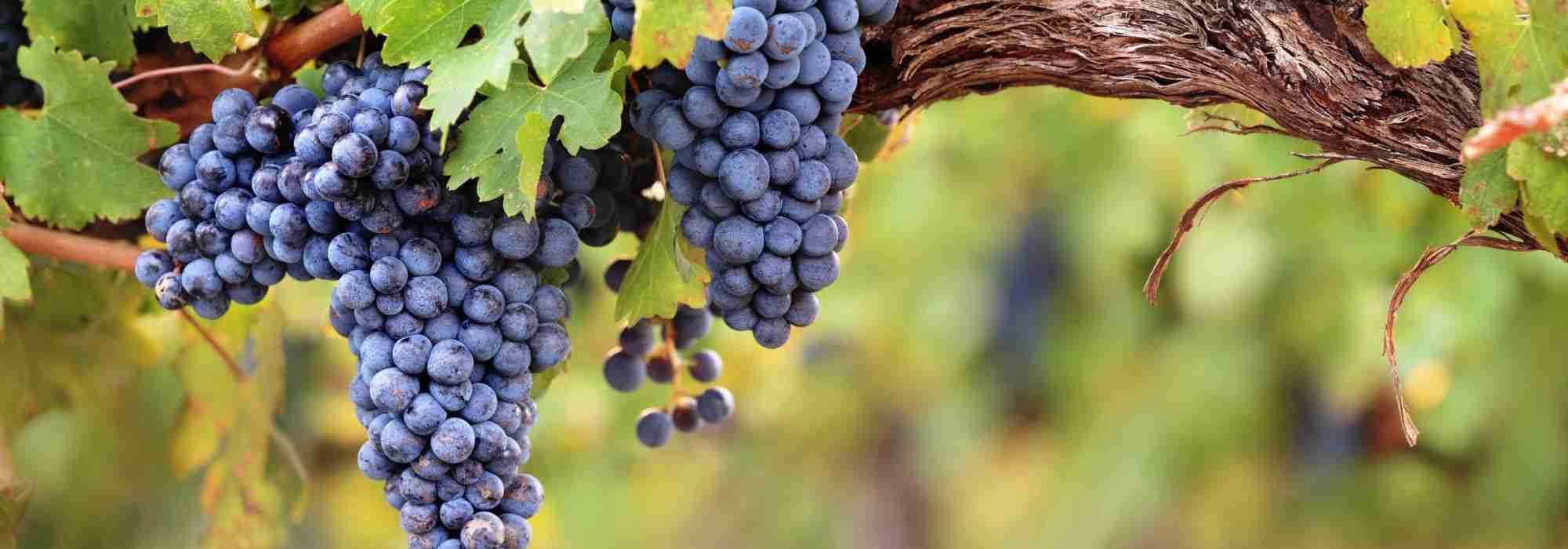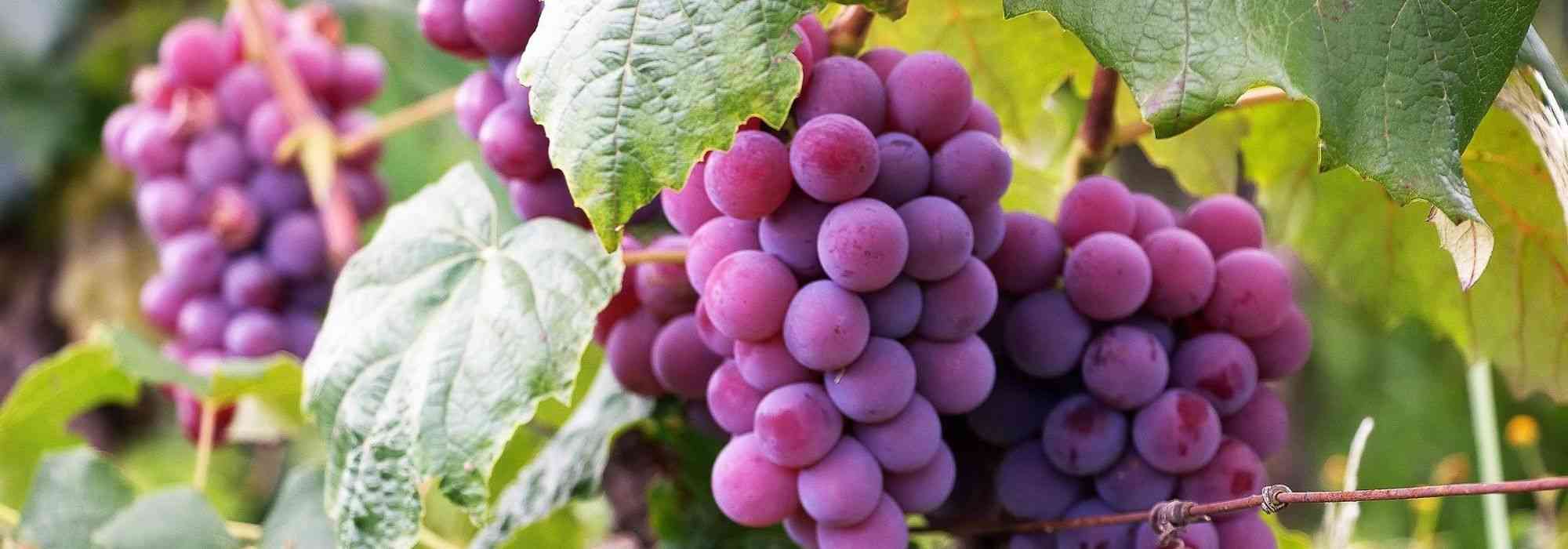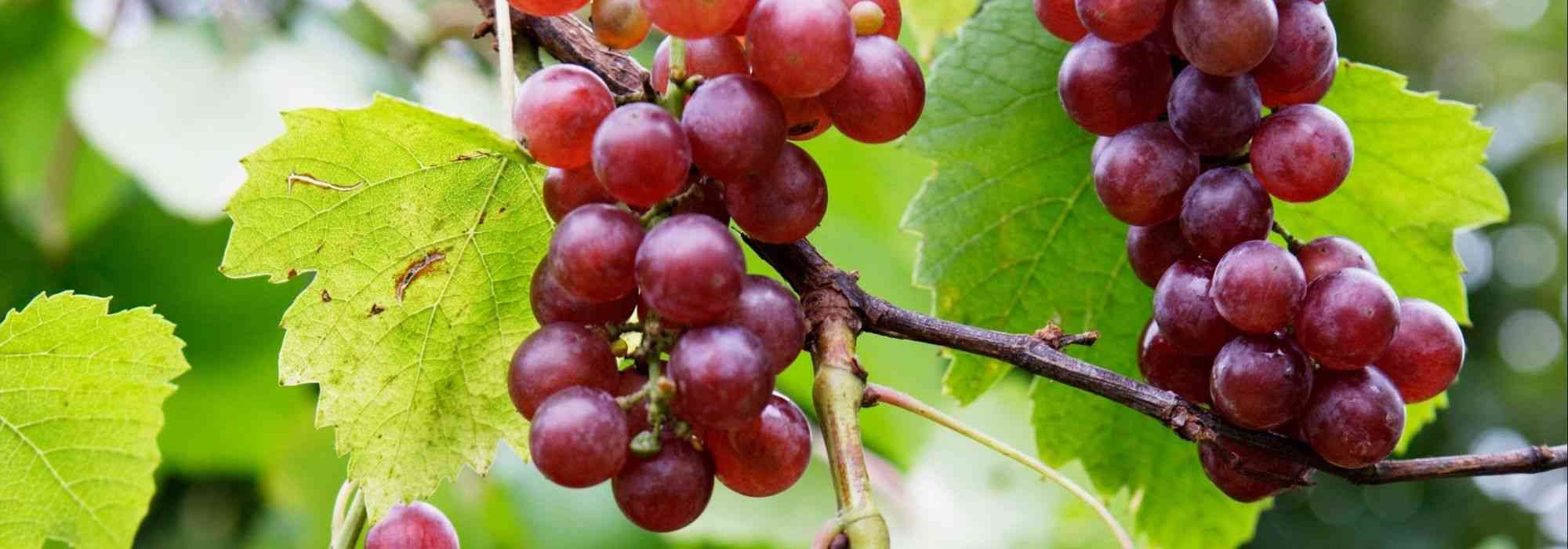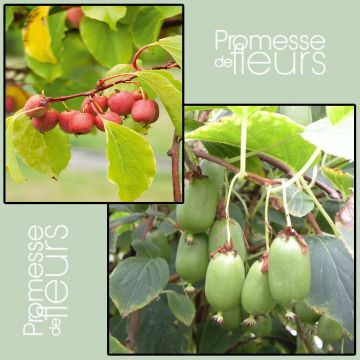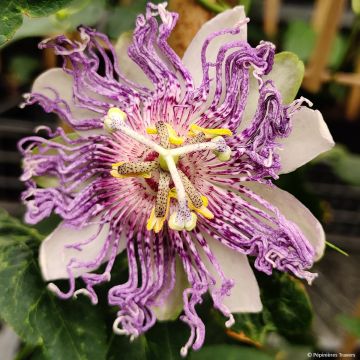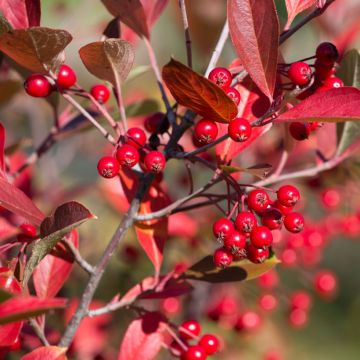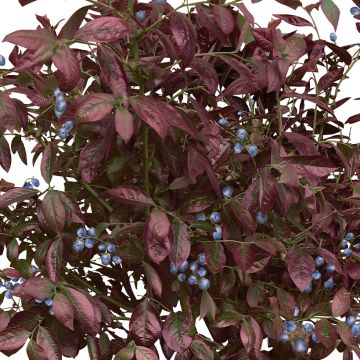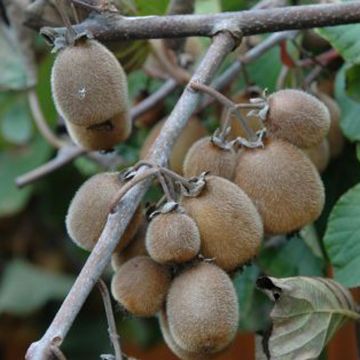

Vigne sans pépin Aperina Ametista
Vitis vinifera Ametista - Grape vine
Vitis vinifera Ametista
Common Grape Vine, European Grape, Wine Grape
Absolutely not resistant to diseases, very sensitive to mildew.
Sylvain, 02/02/2025
Special offer!
Receive a €20 voucher for any order over €90 (excluding delivery costs, credit notes, and plastic-free options)!
1- Add your favorite plants to your cart.
2- Once you have reached €90, confirm your order (you can even choose the delivery date!).
3- As soon as your order is shipped, you will receive an email containing your voucher code, valid for 3 months (90 days).
Your voucher is unique and can only be used once, for any order with a minimum value of €20, excluding delivery costs.
Can be combined with other current offers, non-divisible and non-refundable.
Home or relay delivery (depending on size and destination)
Schedule delivery date,
and select date in basket
This plant carries a 6 months recovery warranty
More information
We guarantee the quality of our plants for a full growing cycle, and will replace at our expense any plant that fails to recover under normal climatic and planting conditions.

Would this plant suit my garden?
Set up your Plantfit profile →
Description
This 'Ametista' vine, little known in Europe, is a seedless table grape variety that produces clusters of golden grapes that turn pink when ripe, with a delicate strawberry aroma. It is a moderately vigorous, productive vine that is very hardy and disease-resistant, and not demanding in terms of soil. It is easy to grow anywhere as long as it receives enough sunlight. The grapes can be harvested from early September in the South, and in September-October in colder regions. Very pleasant to taste, these grapes will delight children!
This 'Aperina Ametista' vine is part of a series of descendants of the Sultanine grape (also known as Thompson Seedless), a variety known as "seedless" and grown on a large scale for the production of raisins. They all have the common characteristic of producing apyrene grapes, whose seeds are atrophied. This plant belongs, like all vines, to the Vitaceae family.
The 'Ametista' vine is similar to the 'Katharina' variety in terms of taste and size of its grapes. It is a sarmentous and climbing bush, whose serpentine stems equipped with tendrils reach about 3m (10ft) in length over time. It forms a trunk, often knotty and twisted, covered with a fibrous and brown bark that flakes off in strips as it ages. Its long green stems bear beautiful rounded leaves with serrated edges, of medium green colour, turning yellow before falling in autumn.
It blooms in late spring, from May to June depending on the region, in the form of dense and well-formed clusters, with a pyramidal shape, branched, loaded with tiny green flowers. After pollination by insects, the berries that we call grapes are formed. They are rather large and oval to pointed in shape. Their skin changes from green to golden and then turns pink, especially on the parts exposed to the sun. They contain a translucent pulp, almost devoid of true seeds. Juicy and sweet, it reveals a pleasant fruity aroma. This variety is pruned in late winter, after frost, above 5 buds (buds) to promote the formation of new shoots that will flower.
Contrary to popular belief, seedless grapes are not genetically modified organisms, but they are the result of a complex selection process carried out by vine specialists. They are fruits borne by sterile hybrid plants, whose seeds, or pips, are unable to develop: reduced to their simplest expression, these seeds are barely detectable in the mouth.
Planted in the sun, the 'Aperina Ametista' vine will be very decorative along a wall, on a pergola, in the ground or in a large container on a terrace. The grapes can be consumed as they are, in juice, in fruit salads, in pies or in jams. This vine can be planted in the garden, on a pergola, in a container, or trained against a wall.
Plant habit
Flowering
Foliage
Botanical data
Vitis
vinifera
Ametista
Vitaceae
Common Grape Vine, European Grape, Wine Grape
Cultivar or hybrid
Other Grapevines
View all →Planting and care
The 'Aperina Ametista' Vine is planted in well-prepared ordinary soil, even limestone, which you have enriched with an organic fertiliser. Once well established, the vine withstands summer drought well. Choose a sunny exposure, possibly partial shade in the south (southeast exposure). It can tolerate temperatures as low as -20°C (-4°F). Prune it in February-March, after the frost, leaving 2 or 3 buds on the secondary branches. Prune it again once the berries have formed on the clusters, leaving 2 or 3 leaves above each cluster (this allows the sun to reach the fruits and the sap to feed them more effectively). Once the framework of your trellis is formed, remove every year the branches that have produced fruit. Stake or train to support and guide the branches. Train it against a wall to benefit from the grapes directly. Downy mildew and powdery mildew are common (especially in rainy climates), which is why it is necessary to treat the vine as a precaution in spring and during summer, with Bordeaux mixture and/or sulfur powder. This vine may take a season to establish well, during which it will grow moderately. Its woody climbing stems will then grow several metres per year and will require pruning.
Planting period
Intended location
Care
Planting & care advice
-
, onOrder confirmed
Reply from on Promesse de fleurs
Similar products
Haven't found what you were looking for?
Hardiness is the lowest winter temperature a plant can endure without suffering serious damage or even dying. However, hardiness is affected by location (a sheltered area, such as a patio), protection (winter cover) and soil type (hardiness is improved by well-drained soil).

Photo Sharing Terms & Conditions
In order to encourage gardeners to interact and share their experiences, Promesse de fleurs offers various media enabling content to be uploaded onto its Site - in particular via the ‘Photo sharing’ module.
The User agrees to refrain from:
- Posting any content that is illegal, prejudicial, insulting, racist, inciteful to hatred, revisionist, contrary to public decency, that infringes on privacy or on the privacy rights of third parties, in particular the publicity rights of persons and goods, intellectual property rights, or the right to privacy.
- Submitting content on behalf of a third party;
- Impersonate the identity of a third party and/or publish any personal information about a third party;
In general, the User undertakes to refrain from any unethical behaviour.
All Content (in particular text, comments, files, images, photos, videos, creative works, etc.), which may be subject to property or intellectual property rights, image or other private rights, shall remain the property of the User, subject to the limited rights granted by the terms of the licence granted by Promesse de fleurs as stated below. Users are at liberty to publish or not to publish such Content on the Site, notably via the ‘Photo Sharing’ facility, and accept that this Content shall be made public and freely accessible, notably on the Internet.
Users further acknowledge, undertake to have ,and guarantee that they hold all necessary rights and permissions to publish such material on the Site, in particular with regard to the legislation in force pertaining to any privacy, property, intellectual property, image, or contractual rights, or rights of any other nature. By publishing such Content on the Site, Users acknowledge accepting full liability as publishers of the Content within the meaning of the law, and grant Promesse de fleurs, free of charge, an inclusive, worldwide licence for the said Content for the entire duration of its publication, including all reproduction, representation, up/downloading, displaying, performing, transmission, and storage rights.
Users also grant permission for their name to be linked to the Content and accept that this link may not always be made available.
By engaging in posting material, Users consent to their Content becoming automatically accessible on the Internet, in particular on other sites and/or blogs and/or web pages of the Promesse de fleurs site, including in particular social pages and the Promesse de fleurs catalogue.
Users may secure the removal of entrusted content free of charge by issuing a simple request via our contact form.
The flowering period indicated on our website applies to countries and regions located in USDA zone 8 (France, the United Kingdom, Ireland, the Netherlands, etc.)
It will vary according to where you live:
- In zones 9 to 10 (Italy, Spain, Greece, etc.), flowering will occur about 2 to 4 weeks earlier.
- In zones 6 to 7 (Germany, Poland, Slovenia, and lower mountainous regions), flowering will be delayed by 2 to 3 weeks.
- In zone 5 (Central Europe, Scandinavia), blooming will be delayed by 3 to 5 weeks.
In temperate climates, pruning of spring-flowering shrubs (forsythia, spireas, etc.) should be done just after flowering.
Pruning of summer-flowering shrubs (Indian Lilac, Perovskia, etc.) can be done in winter or spring.
In cold regions as well as with frost-sensitive plants, avoid pruning too early when severe frosts may still occur.
The planting period indicated on our website applies to countries and regions located in USDA zone 8 (France, United Kingdom, Ireland, Netherlands).
It will vary according to where you live:
- In Mediterranean zones (Marseille, Madrid, Milan, etc.), autumn and winter are the best planting periods.
- In continental zones (Strasbourg, Munich, Vienna, etc.), delay planting by 2 to 3 weeks in spring and bring it forward by 2 to 4 weeks in autumn.
- In mountainous regions (the Alps, Pyrenees, Carpathians, etc.), it is best to plant in late spring (May-June) or late summer (August-September).
The harvesting period indicated on our website applies to countries and regions in USDA zone 8 (France, England, Ireland, the Netherlands).
In colder areas (Scandinavia, Poland, Austria...) fruit and vegetable harvests are likely to be delayed by 3-4 weeks.
In warmer areas (Italy, Spain, Greece, etc.), harvesting will probably take place earlier, depending on weather conditions.
The sowing periods indicated on our website apply to countries and regions within USDA Zone 8 (France, UK, Ireland, Netherlands).
In colder areas (Scandinavia, Poland, Austria...), delay any outdoor sowing by 3-4 weeks, or sow under glass.
In warmer climes (Italy, Spain, Greece, etc.), bring outdoor sowing forward by a few weeks.






























